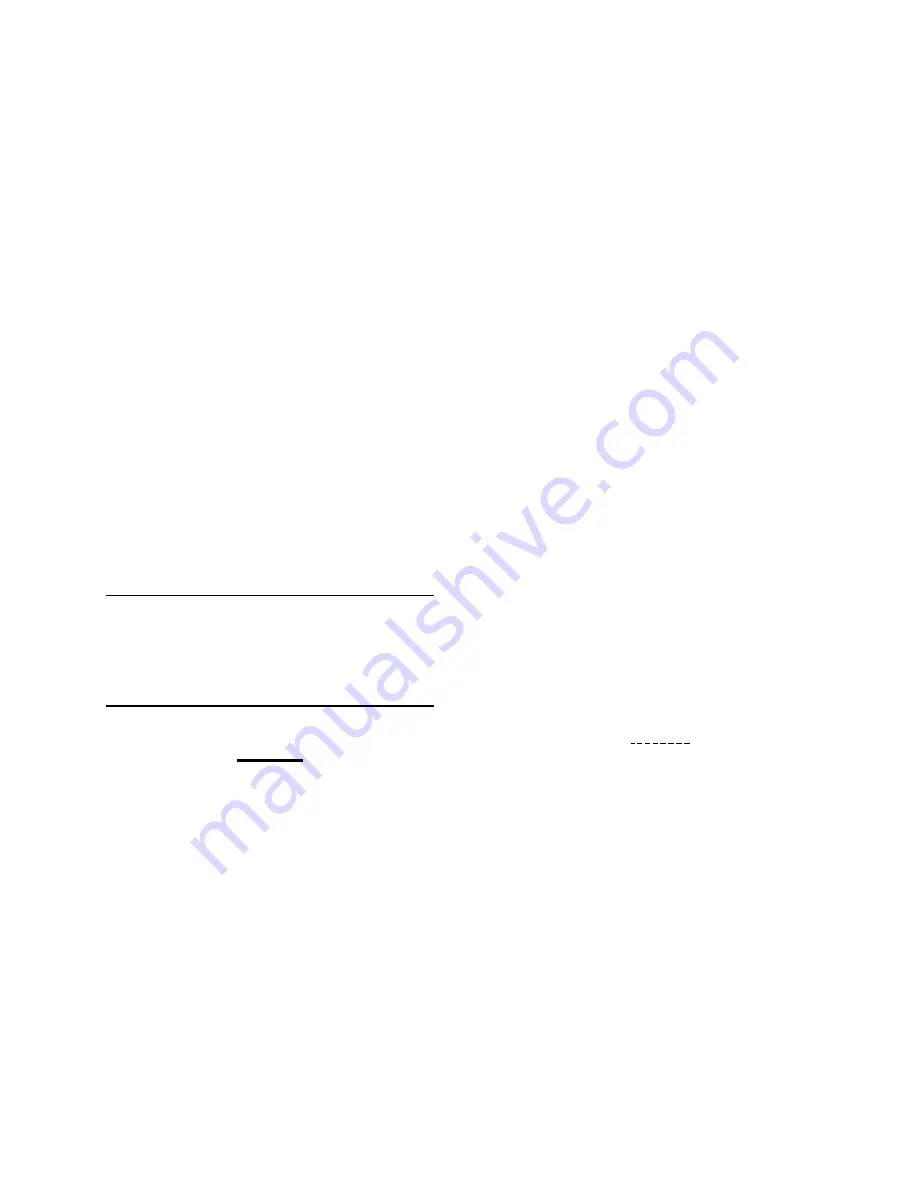
5
The discharge piping should be as direct as
possible using a minimum number of valves
to reduce pipe friction losses.
Install a check valve and closing valve in the
discharge line. The check valve between the
pump and closing valve protects the pump
from water hammer and prevents reverse
rotation in the event of a power failure. The
closing valve is used in priming, starting and
shutdown.
3. Connect any necessary auxiliary piping and
gauge lines.
4. Since the pumping unit is shipped with
bearings packed, initial greasing is not
necessary unless pumping unit has been in
storage for an extended period of time (refer
to section II, Inspection and Storage).
5. Turn pump and motor shafts by hand to
ensure free rotation.
6. Connect wiring to motor. Due to high voltage
required to operate the pumping unit,
personnel working with the equipment
should be familiar with electrical safety
practices and modern methods of
resuscitation.
7. Connect electrical power supply to motor.
8. Open system valves.
IV. ALIGNMENT.
A flexible coupling connects the pump and motor.
The motor bracket aligns the pump and motor. No
further alignment is necessary.
V. OPERATION.
A. PRESTART CAUTIONS.
WARNING
Before activating the pumping unit, check to
make sure there are no personnel
performing maintenance on the unit. As a
result, serious injury or death to personnel
could occur if unit is activated.
Before starting or operating the pum ping unit, read
this entire manual and conduct the following checks:
1. Before starting the pump, rotate shaft by
hand to assure all moving parts are free.
2. Before starting the pump, install closed
guards around all exposed rotating parts.
3. Observe all caution or danger tags attached
to the equipment.
4. Do NOT run pump dry. Dry running may
result in pump seizure.
5. If excessive vibration or noise occurs during
operation, shut the pump down and consult a
Carver representative.
6. Use of a check valve in discharge piping is
recommended if there is a high volume of
reverse flow.
7. Check level in tank to see that the pump is
submerged in fluid.
8. Check to make sure fluid in the pump is
clean, clear and free of debris.
9. Standard grease lubricated pumps are
shipped with factory lubrication packed
bearings. Lubrication is adequate for a
minimum of 1,000 operating hours or six
months of continuous operation under
normal conditions. After extended storage or
exposure to unusually humid or hot
environmental conditions, the bearings and
their lubricant should be checked before
operating the unit. For bearing lubrication
options, refer to figure 3.
10. Reference Table A, Torque Values, to avoid
equipment damage and injury to personnel.
B. STARTING THE PUMP.
The pumping unit
operates without operator intervention once system
valves have been adjusted to the specified pumping
conditions. When the casing of the pump is
submerged into the fluid pumped, the pump is
rendered self-priming. Before starting the unit, refer to
section I, paragraph E, Safety Precautions. Proceed
with operation as follows:
1. Make sure no one is working on the pumping
unit.
2. If the pumping unit has been idle for a period
of time, make sure unit is firmly attached to
its foundation.
3. Open valves to pressure gauges in system.
CAUTION
Check level of liquid in tank so casing is
under liquid level.
4. Jog starter switch on motor to check
direction of rotation. Correct direction of
rotation is shown using a directional arrow
on the pump motor bracket. Standard
direction of rotation is clockwise when
viewed from fan end of motor.
5. Partially open discharge valve.
6. Start the pumping unit in accordance with
the directions on the electrical power supply.
7. Slowly adjust discharge valve to operating
condition required.
8. Pumping unit is now in full operation.
C. STOPPING THE PUMP.
To stop the pump,
use the following process:
Summary of Contents for GVS Series
Page 1: ...GVS I 480 Rev 01...
Page 3: ...NOTES ON INSPECTION AND REPAIRS INSPECTION DATE REPAIR TIME REPAIRS COST REMARKS...
Page 23: ...19 Figure 2 Shaft Coupling Detail...
Page 24: ...20 Figure 3 Bearing Lube Options...
Page 25: ...21 Figure 4 Optional Wear Ring...
Page 26: ...22...
Page 27: ...October 2003...
























